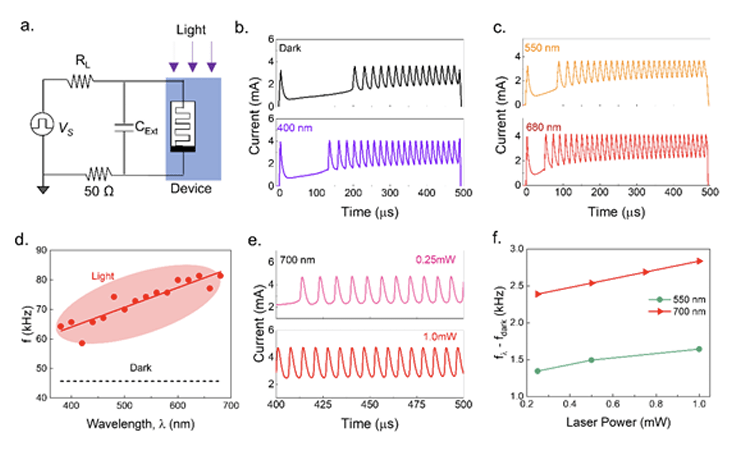
The application of hardware-based neural networks can be enhanced by integrating sensory neurons and synapses that enable direct input from external stimuli. Here, we report direct optical control of an oscillatory neuron based on volatile threshold switching in V 3 O 5. The devices exhibit electroforming-free operation with switching parameters that can be tuned by optical illumination. Using temperature-dependent electrical measurements, conductive atomic force microscopy (C-AFM), in-situ thermal imaging, and lumped element modelling, we show that the changes in switching parameters, including threshold and hold voltages, arise from overall conductivity increase of the oxide film due to the contribution of both photo-conductive and bolometric characteristics of V 3 O 5, which eventually affects the oscillation dynamics. Furthermore, our investigation reveals V 3 O 5 as a new bolometric material with a remarkable temperature coefficient of resistivity (TCR) as high as-4.6% K-1 at 423 K. We show the utility of optically tuneable device response and spiking frequency by demonstrating in-sensor reservoir computing with reduced computational effort and an optical encoding layer for spiking neural network, respectively, using a simulated array of devices. This article is protected by copyright. All rights reserved.
